“He who knows he has enough is rich.”
So I’ve been experimenting with this idea. I’ve been flexing my thrift muscle and making do with what I already have.
When I was working on my PhD, I discovered how to feel rich without having a lot.
I came across a simple graph that changed the way I viewed the world: The Wundt Curve of Satisfaction.
This graph illustrates the relationship between satisfaction and stimulation from consumption. Let me explain how it works . . .
When consumption levels are relatively low, the satisfaction experienced is quite high. But there’s this point at the top of the curve where you feel totally satisfied with what you have (the comfort zone). Let’s call this point the Enough Point.
But once you go beyond the Enough Point, the returns start to diminish. As you purchase your 27th pair of shoes, you feel satisfied for about 30 seconds and then you think ‘meh!’. You don’t feel as excited as you did when you purchased your first and second pair of shoes.
So up to a point more is more, but beyond the Enough Point, more is less.
Because we live in a culture that encourages us to spend up big.
Advertisers bombard us with messages that tell us if we want to be happy and successful we need to consume stuff. And lots of it.
The job of advertisers is to construct a world that makes us want stuff that we don’t need. They tap into our desire to have more.
Advertisers also create new needs that may not have existed in us until the ad came along. Have you ever picked up an IKEA catalogue and suddenly you felt the need to have a new piece of furniture or a brand new study space?
You felt good about your life just a minute ago. But now you’re feeling dissatisfied? What’s with that?
In short, advertising can seriously mess with our minds, our happiness and our Enough Point.
It turns out the secret to happiness is simple. And it’s free (or very cheap). If you want to know what it is, read on!
According to Dr Timothy Miller if you want to be happy and content, then you need to start wanting what you already have. In other words, you need to find your Enough Point.
Over the last few months, I’ve created several new thrifty habits around saving money and appreciating what I have.
The following habits have helped me to reconnect to my Enough Point:
I discovered a great new place to eat at. It’s called The Kitchen. My home kitchen!
With a lot of my work being cancelled due to COVID-19, I had the time and energy to cook. So cook I did!
My husband and I have only ordered takeaway two times in the past eight weeks (Thai and Indian). This is a big deal as we’d usually get takeaway at least once a week.
By eating at home, it gave our taste buds a chance to reset (research shows that it takes 10 days for your taste bud cells to repopulate). We now appreciate the flavours of fresh produce and our cravings for take away have significantly decreased.
Estimated savings: $350
My husband Peter has always enjoyed growing vegetables in his spare time. But he ramped things up when COVID-19 hit. Every spare moment he had, he would be out in the garden planting vegetables!
I have to say, our garden looks amazing. But the best thing has been all the wonderful chemical free, nutrient dense produce!
Peter does 99% of the hard work in the garden. It’s my job to provide emotional support (“Great job! Keep going Pete!”) and turn the produce into delicious meals.
Estimated savings: $500
Every time I throw away food, I imagine I’m throwing away my hard earned money. It’s a painful thought!
But when you throw away food, it’s not only food and money that you waste. You waste all the resources that went into producing the food in the first place.
So I created a fun game to not let any food in my fridge and pantry go to waste. I tried to see how creative I could be with my cooking by shopping from my pantry and using up what I had (thereby avoiding going to the shops for as long as possible).
The old apples on the counter became apple crumble. The dried kidney beans became a chilli bean dish. The ripe bananas were turned into muffins.
Estimated saving: $200
Instead of signing up to Netflix, we use Kanopy. This is a collection of movies and documentaries that you can access for free if you have a library card. My local library also offers a Click and Collect service, so I order new books and pick them up once a week.
Estimated savings: $150
I had developed a bad habit of going op shopping for clothes every week. My desire for clothing was insatiable. I was addicted to finding a bargain.
Sure, you could argue it was just a bit of fun. I was only spending $5-$20 each time (hardly a fortune, right?). But I was doing it every week. Some serious coin was starting to add up.
I knew I had a problem.
So one afternoon, I went through my closet (piece by piece) and examined every item. Some items needed repairing. Others just needed a good iron. I soon realised I had more than enough clothing. It was time to start loving what I already had.
Whenever I now feel the urge to buy clothes, I repeat my mantra:
“Enough. I have enough.”
I also think about the new clothing item after it’s been worn a few times. I visualise it being tossed in the washing basket. I know from experience, it only takes a few days for the shine and novelty to wear off.
These strategies seem to have worked. It’s been two months and I haven’t purchased any clothing.
Estimated savings: $250
Instead of mindlessly shopping for clothes, I started learning new skills. I signed up to a couple of MOOCs (Massive open online courses).
MOOCs allow you to study at some of the best universities around the world (e.g. MIT, Stanford and Harvard) without leaving your home and spending a single cent. All you need is a computer, Internet connection, pen and paper and you’re good to go!
For an extensive collection of free MOOCs and reviews check out Class Central.
Estimated savings: $500
Physical movement is a big part of my life. It’s something I prioritise above everything else because it makes me feel, think and learn better. It also makes me a kinder, much more focused and disciplined person.
So before COVID-19 restrictions kicked in, I was happily spending $55 a week on a gym membership. I considered this a non negotiable expense. It was critical for my health and well-being.
But when the gym closed, I realised I could easily workout at home. I had collected a few bits of equipment over the years (e.g. dumbbells, stretch bands, and a yoga mat). With the help of a couple of fitness apps, I devised my own exercise program.
I also explored other (more fun) ways to exercise, including taking part in regular virtual dance parties with friends and going on bike rides.
Estimated savings: $450
It turns out you don’t need to have a lot of money or a big fancy house to feel rich. Why? Because freedom from desire is what makes you feel rich. It allows you to focus on things other than things: developing quality relationships, your intellect and new skills.
None of these things require material wealth. Just a curious mind and a willingness to learn (and make mistakes). As Art Buchwald once said:
“The best things in life aren’t things.”
I feel incredibly grateful for the life I have. So here’s to flexing our thrift muscles!
How do you flex your thrift muscle? Is there anything you do to save money? Feel free to share your tips below.
Share This:
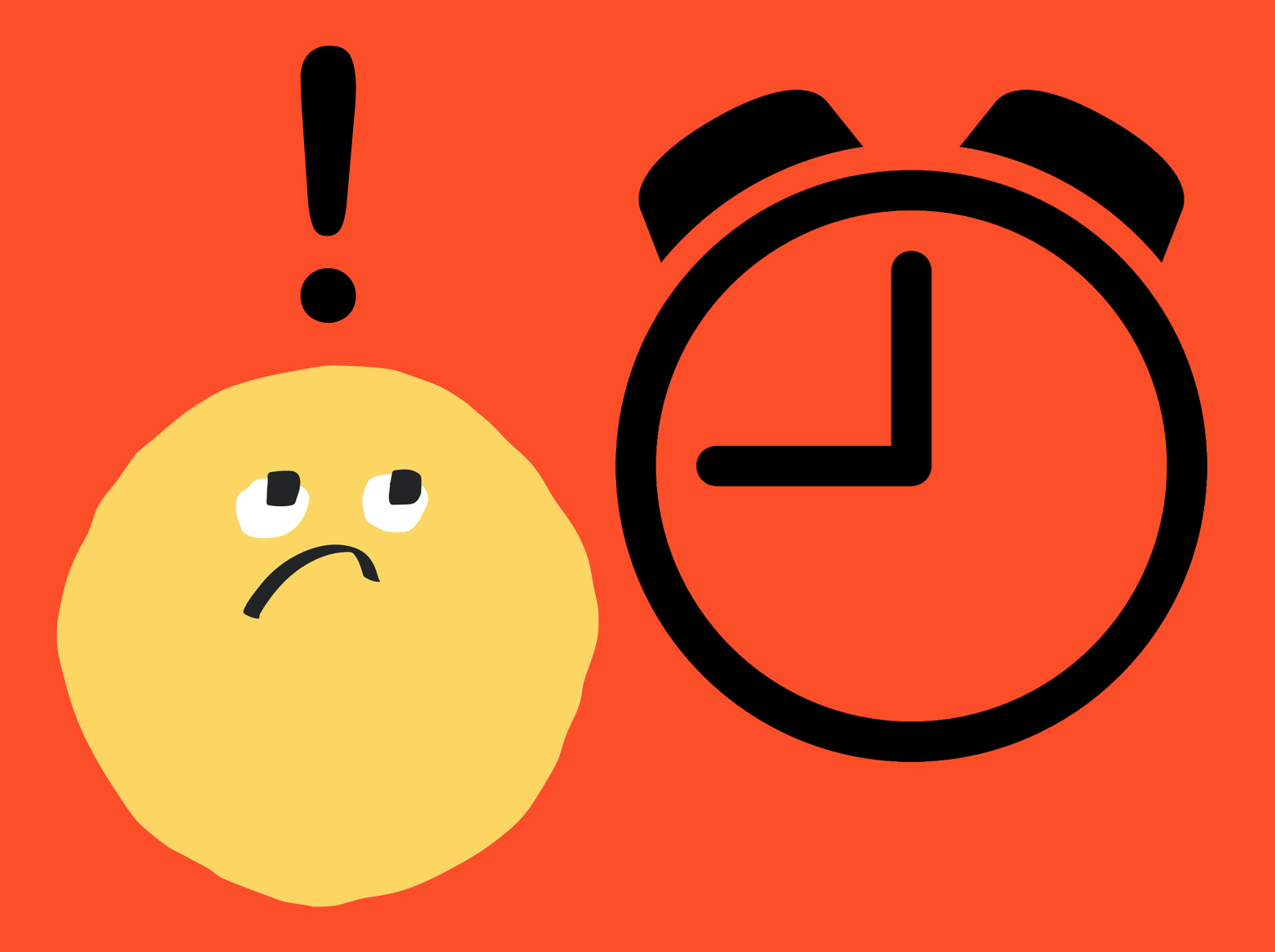
This is what my life used to feel like.
I was always in a rush.
Always cutting it fine.
Often running late.
I was late for class.
Late for dinner at friends’ houses.
Late for meetings.
In my world, being late was the norm. It was perfectly acceptable to drag your feet and rock up an hour late to an event.
So, I had to learn the hard way.
One morning, I was running late for school. I rocked up to form room three minutes late, and I knew straight away I was in trouble.
My form room teacher said:
“Jane, go to student services to get a late note. You’ve been late too many times. It’s not good enough”.
When you were told to go to student services, this was bad news. You were being told to do the walk of shame.
I pleaded with her:
“Please, no! Come on! It was my dad’s fault. He was late in driving me to school. My dad is always running late”.
My form room teacher wasn’t buying my excuses.
To this day, I can still remember that walk to student services. I felt frustrated and stressed out of my mind.
It wasn’t fun being late all the time. I wanted to be on time and feel less rushed and more in control. But I had no idea how to break this bad habit.
One thing was clear to me: people weren’t happy when I was late. People would get annoyed. Passive aggressive vibes were always coming my way.
Fast forward 20 years: I’m no longer someone who is always running late and rushing around. I’m certainly not perfect, but I can say I’ve come a long way.
From my experience, I can tell you it’s exhausting being someone who is always running late for things. When you live like this, you add so much unnecessary stress, drama, and anxiety to your day.
Your days take on a frenetic feel as you rush from one thing to the next.
But there’s also a larger cost to society.
This is what the famous Good Samaritan study examined. It looked at how being rushed and time pressured impacted people’s behaviour and thought processes.

In this fascinating study, researchers conducted a psychological experiment with a group of theology students who were training to be church ministers. This was one of those psychological experiments where participants were deceived (they were told the researchers were studying one thing when they were studying something else). Here’s what happened . . .
The participants were told they were participating in a study on jobs for theology students and were asked to fill in some questionnaires (this was the bogus part of the experiment).
The real experiment took part in the next phase . . .
After the questionnaires were filled in, the participants were told they had to deliver a presentation in another university building, which was a short walk away. The students were instructed they would need to tell the story of the Good Samaritan (a story about a Samaritan who helps a stranger who has been robbed, beaten up by bandits and left half dead).
They were handed a map and provided instructions on how to get to the building, which involved passing through a dim, dingy, and drab alley.
Students were placed in one of three groups:
• High-hurry group
• Intermediate-hurry group
• Low-hurry group
After they were handed the map, the students in the high-hurry condition were told:
“Oh, you’re late. They were expecting you a few minutes ago. We’d better get moving. The assistant should be waiting for you, so you’d better hurry. It shouldn’t take but just a minute.”
Students in the intermediate-hurry group were told:
“The assistant is ready for you, so please go right over.”
Students in the low-hurry group were told:
“It’ll be a few minutes before they’re ready for you, but you might as well head on over. If you have to wait over there, it shouldn’t be long.”
While the participants walked to the building where they’d be delivering the Good Samaritan story, they encountered a slumped victim in the alley. This victim was a plant by the researchers.
The victim was an actor who was pretending to be someone in need of help. The actor wore shabby clothes and was slumped in the doorway with his head down and eyes closed. He wasn’t moving.
All the students encountered this actor. As the students walked past, the actor coughed twice and groaned (you couldn’t miss him!).
The participants didn’t know that their behaviour was under surveillance. The researchers observed how the students in each group responded to the actor. Did the participants help the man slumped in the doorway? And if so, how did they help?
Here’s what they found . . .
Low-hurry group: 63% offered help
Intermediate-hurry group: 45% offered help
High-hurry group: 10% offered help
The researchers concluded:
“A person not in a hurry may stop and offer help to a person in distress. A person in a hurry is likely to keep going. Ironically, he is likely to keep going even if he is hurrying to speak on the parable of the Good Samaritan, thus inadvertently confirming the point of the parable. (Indeed, on several occasions, a seminary student going to give his talk on the parable of the Good Samaritan literally stepped over the victim as he hurried on his way!).”
As an aside, after the experiment, the participants took part in a debriefing session where they were told what the research was actually about. The researchers made it clear that they were studying the social forces (i.e. the conditions) a person finds themselves in, and they were not passing judgment on the students’ behaviour.
In life, we can’t always control the conditions we find ourselves in (e.g., a workplace that imposes a ridiculous workload on staff). But some things are often within our control that we can do something about to be less rushed and time pressured.
Doing these things can help us to feel more present, have greater awareness of our surroundings, feel calmer and less stressed, and experience more control of our time.
I’m going to share with you some habits, ideas, and practices you can implement to help you in this area. I’ll start with the simplest habits before progressing to the deeper, more complex practices.
One of the best tools you can buy is a basic watch (preferably one that doesn’t have fancy features like the ability to receive calls or texts).

My advice is to wear a watch and look at it regularly.
A lot of people use their phones to check the time, but this can be a time trap (I find my phone way too distracting).
You may look at your phone to check the time but find yourself checking social media while you’re at it. Without any stopping mechanisms in place, you can get sucked in and thrown completely off course.
Tiny Habit:When I wake up in the morning, I will put on my watch.
When I get distracted, I will check my watch and schedule and ask “What do I need to be doing right now?”
The modern world is a distracting place. Even without access to your phone, it’s easy to get derailed. Along with checking your watch regularly, check your timetable/planner/to-do list. Ask the following questions:
• What do I need to be doing right now?
• Am I doing what I need to be doing?
• Is this the best use of my precious time and energy?
Tiny Habit:When I notice I am wasting time, I will look at my to-do list.
A prompt is a reminder. It’s anything that triggers you to move from one task or place to another.
When I need to be somewhere by a certain time, I set my alarm for when I need to leave the house. When I hear the alarm, I grab my bag and take off. No excuses.
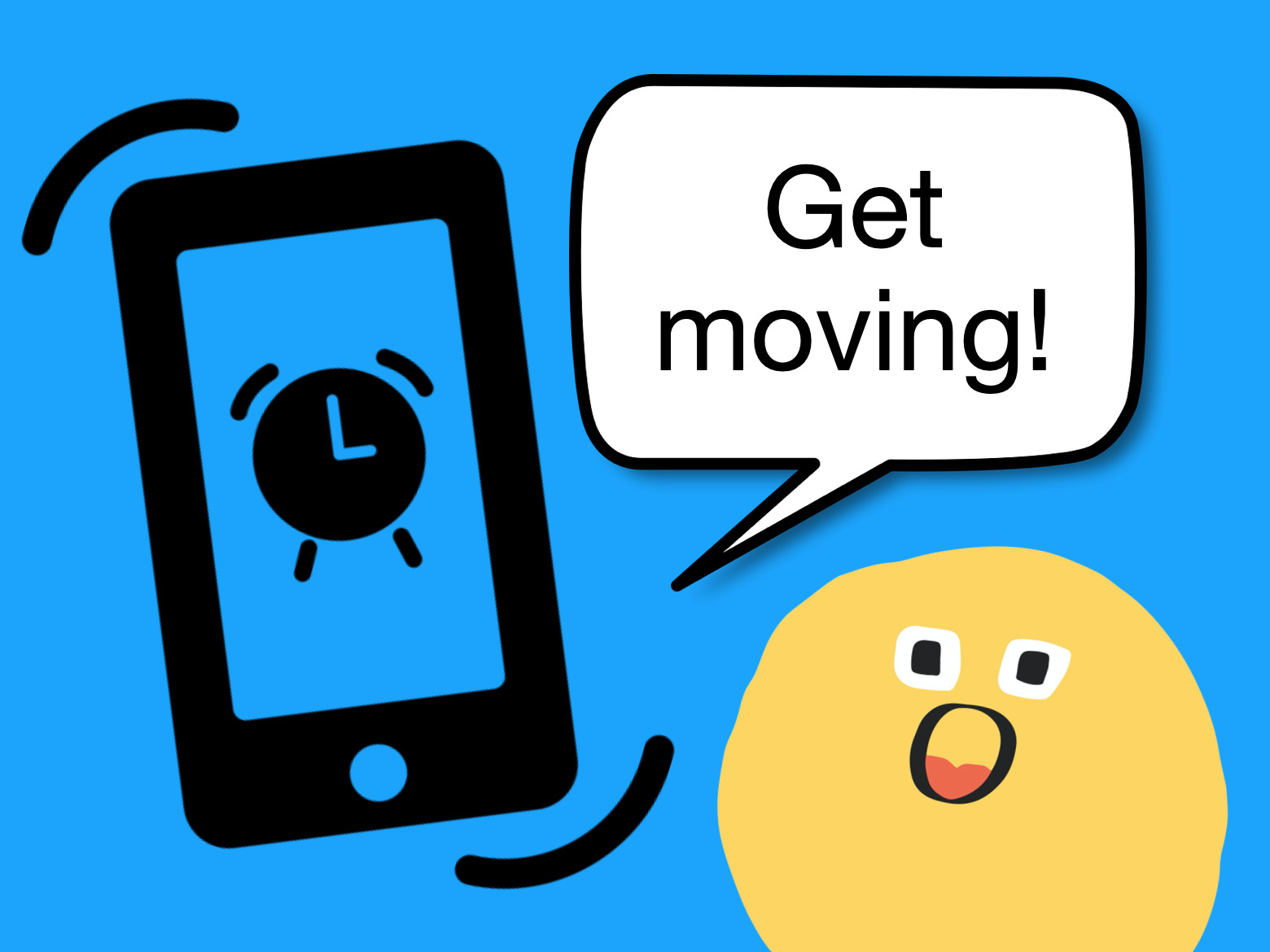
You should have a rough idea of how long it takes to get to school or work. Set your alarm for when you need to leave. When you hear your alarm, get moving.
Tiny Habit:
When I hear my alarm, I will pick up my bag and go.
It’s tempting to cram in a few more tasks before you leave for work or school (e.g., sending one more text or watching one more short video). But ask yourself, “Do I have time to do this?”
The answer is most likely no.
Tiny Habit:When I feel tempted to do another task, I will ask “Do I have time to do this?”
When I was a kid, there was no Internet and no smartphones. But we had morning cartoons on the TV.
These cartoons were fun to watch and could easily capture your attention. But you still had some awareness of the time because the time was always displayed in the corner of the screen.

The major problem with most social media apps is they don’t contain clear time cues. This is a deliberate design decision. They want you to lose track of time. Thirty minutes online can feel like three minutes.
The solution is to stay offline in the mornings. If you must go online, have a strict log-off time. I recommend setting an electronic timer for a set time or using an Internet Blocker app to kick you off.
I use an Internet blocker app called Freedom. This app cost me a bit of money but there’s a free alternative called Cold Turkey.
Tiny Habit:
When I feel the urge to go on social media in the morning, I will set a timer for 5 minutes.
Are you feeling time pressured and running late because you’re trying to do way too much?
Our modern culture encourages us to do more, be more, have more, sleep less, etc. It’s not healthy or sustainable.
If this is the case for you (i.e. you’re overcommitted), I realise it may not be your fault. Maybe your boss or teachers have unrealistic expectations about what you can accomplish in a day.
All that being said, your packed schedule may also be due to your inability to say no. Perhaps you feel like you need to say yes to every opportunity that comes your way to build an impressive resume and stand out from the crowd. If so, I get it (I’ve been there).
The major problem with doing too much is it leaves you feeling exhausted. You’re not able to fully engage in the task. As you do the activity, you’re worrying about the next thing you need to do.
If you’re doing a bunch of stuff and not enjoying it, perhaps it’s time to cut back on a few activities.
When you commit to doing less stuff (but more meaningful activities that align with your values), you can do that stuff better. You can also extract a lot more joy from the process.
Tiny Habit:
When I am presented with a new opportunity, I will ask “Is this important to me? Is it something I want to be doing with my time?”
In the book Excellent Advice for Living: Wisdom I Wish I’d Known Earlier, Kevin Kelly states:
“You don’t need more time because you already have all the time you will ever get; you need more focus”.

If you find yourself getting distracted by social media apps and YouTube, it’s time to double down on developing your focus muscles.
You can develop your focus muscles by adopting several different habits that relate to the food you put in your mouth, incorporating regular movement and rest breaks into your day, and creating a focus-friendly environment.
This is an area I’ve been working on for a while. What I’ve noticed is when I focus my mind on one task at a time, I can get twice as much done in the time I have available. But I also find that I enjoy the process a lot more, too.
Tiny Habits:
After I stand on my office mat, I will put away three objects on my desk (removing visual clutter)
When I notice my phone is on my desk, I will pick it up and put it in another room.
After I finish doing a deep work sprint (45 minutes), I will do some gentle shoulder rolls.
These habits may sound lame and boring, but they can inject a sense of power, control, ease and even happiness into your day.
When you’re less rushed, you’re less stressed. Because you’re less stressed, the people around you are also more likely to be less stressed (calm is contagious). It also means we end up with a more helpful and thoughtful society.
In our modern world, where we find ourselves increasingly polarised and tribalised, being less rushed and time pressured is something worth striving for.
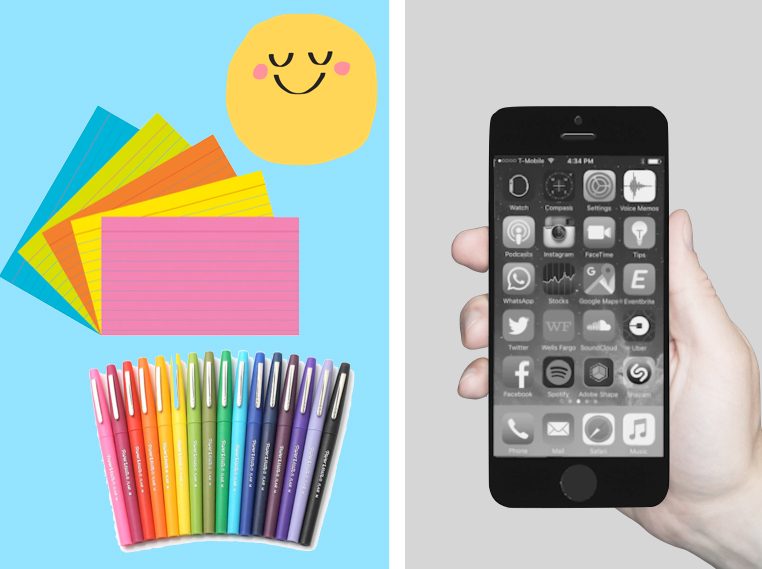
This is no accident. This is a deliberate design decision.
It’s the same reason why fast food logos are often warm reds, yellows, and orange tones. These colours jump out at us. They create a sense of excitement and urgency.
In his book Drunk Tank Pink, Dr Adam Alter argues colour is a hidden force in our lives that can shape the way we think, feel, and behave.
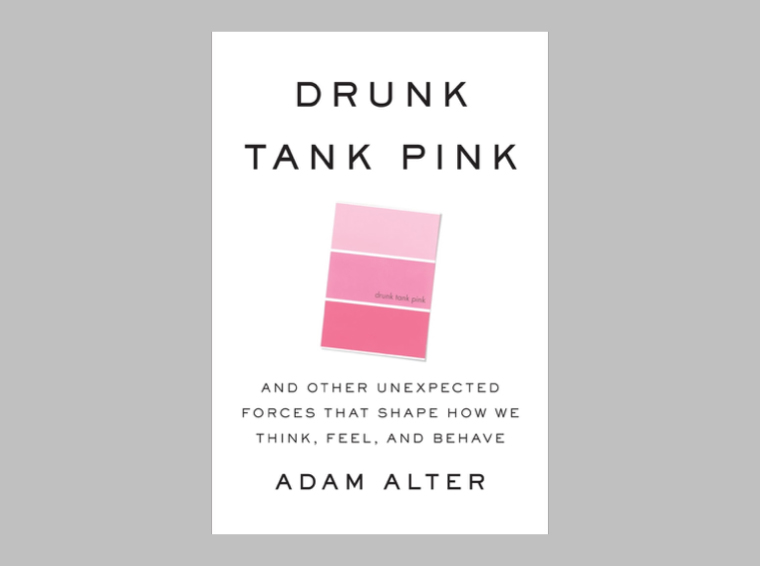
In this blog, I’m going to explore how you can use colour as a tool to help you study more effectively and keep your brain focused and engaged on the task at hand.
There is whole field of research dedicated to exploring the impact of different colours.
One fascinating study looked at the impact of a particular tone of pink (Baker-Miller Pink/Drunk Tank Pink) that appeared to sap people of their energy. Researcher Dr Alexander Schauss found staring at this shade of pink could lower people’s heart rate and pulse compared to staring at other colours.
A 7-month trial was conducted in which prison confinement cells were painted in this pink shade. According to Dr Schauss, when people were exposed for just 15 minutes to this pink colour in their prison cell, it made them more relaxed, less aggressive, and reduced the incidence of violent behaviour.
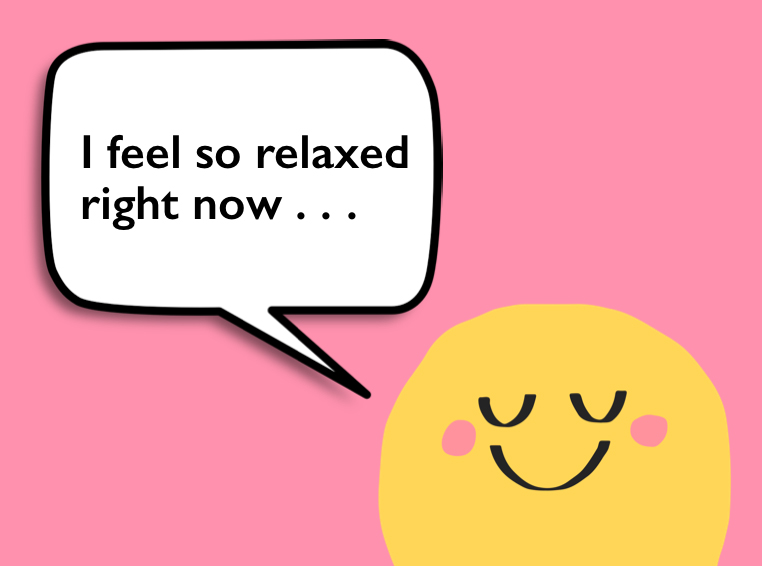
But before you race off to the hardware store to buy a tin of pink paint, you need to understand a few simple things about the psychology of colour.
The research suggests that colour can act as a powerful trigger. It can cue different emotions, thoughts, and behaviours. For instance, when you see a red Stop Sign or light, this captures your attention.
But how we react to colour also comes down to personal preference and particular contexts. Colour can have different meanings in different contexts (e.g., on Valentine’s Day red generally symbolises romance rather than “Danger! Look out!”).
The bottom line is this: when it comes to colour you need to experiment to see what works for you.
Colour can evoke particular states (e.g., a state of calm or alertness). It can also perk up your brain and transform a dry, boring subject into something that’s a little bit more novel and interesting for your brain.
Below I share 9 ways you can use colour to study and work more effectively.
There’s something about a brightly coloured post-it note that captures our attention. This is why I love using post-it notes to help focus my mind and stay on track.
On a post-it note, I create a list of no more than three things that I need to do. Once I’ve completed those tasks, I scrunch up the post-it and throw it in the bin. This action feels surprisingly satisfying! I’ll then grab a fresh post-it note (often in a different colour) to create a new list.
If I’m not sure how to get started with a task (e.g., Task: Write blog post on colour), I’ll grab another post-it note and I’ll scribble down the first tiny action I can take to kick-start the process (e.g., Tiny action: Open Word document).
If you have trouble finding your study materials for each subject and they all look the same or are scattered all over the house, you can use colour to make it easier for you to find what you need.
Try assigning a particular colour to a subject. This makes it easier to stay organised and identify your materials. At home, I assign a light blue to my exercise files and folders. When it’s time to plan my workout for the day, I look for my light blue files and folders.
A simple and cheap way to colour code your materials without investing in brand new stationery is to gather a collection of paint swatches from your local hardware store. You can repurpose these as labels by cutting them into smaller sections and sticking them on your files, notebooks, etc.
Testing yourself with flashcards is a highly effective way to study for a test and/or exam. You can create your own flashcard decks by purchasing index cards in a range of different colours.
Try assigning certain colours to different subjects. Alternatively, you can simply pick a colour you want to work with depending on how you feel.
There are no hard and fast rules. Feel free to mix up your flashcard colours to keep things fresh for your brain.

Creating a mind map on a topic is a simple way to combat study fatigue and inject a little colour and creativity into your study sessions.
Although using different coloured pens isn’t absolutely essential for mind mapping, it’s well worth doing. I use different colours to create the different branches on my mind maps.
I have dozens of colourful mind maps at home. Despite my lack of drawing skills, these mind maps look great and are fun to review primarily due to the different coloured branches.
It’s important that you feel good in your study environment. If you feel good in your study space, you’re more likely to sit down and study there.
I’ve decorated my workspace by putting up colourful posters, inspiring and funny pictures, and artwork on my walls.
If you don’t have access to artwork/posters, you can print out colourful pictures and quotes of things that make you feel good. The addition of a few indoor plants can also help to liven up your space as well as purify the air.
Fluorescent highlighters feel really good to use. It can feel both fun and satisfying to strike things off your to-do list. You can also use these pens to time block different tasks/events in your diary and draw your attention to important tasks that you need to do.
Word of warning: When it comes to studying for a test or exam, I don’t recommend highlighting your books and/or notes as a way to learn. I know it feels good but research shows it’s an ineffective way to learn.
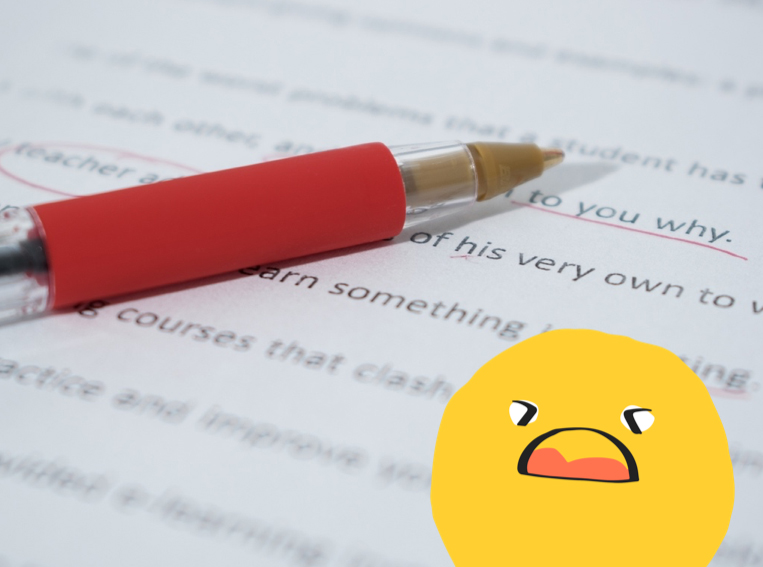
Red pen is often associated with failure and criticism. This is why seeing a teacher’s comments scribbled in red pen can trigger negative emotions in many of us.
Generally, we don’t like reading comments written by others in red pen. It feels nasty! But it turns out if you use a red pen to correct your own work, this can help you to pick up more errors.
Dr Adam Alter discusses one study that looked at the difference between using a blue pen and a red pen to correct an essay. Students who used a blue pen picked up on average 19 errors. In contrast, students using a red pen picked up an average of 24 errors.
But using a red pen has its limitations! If you are trying to solve a problem or taking a test, using a red pen can backfire by activating ‘avoidance motivation’. This is a distracting state of mind that can impair a student’s ability to solve problems and increase stress levels.
As a rule of thumb, use a blue or black pen when solving problems and taking tests. But when you need to cast a more critical eye on your work (e.g., in the proofreading phase), switch to using a red pen.
A lot of us use our phones as an easy way to escape from the boredom and discomfort we experience when doing our work. The apps on our phones are like candy. They are designed to be highly addictive and hijack our attention.
This is where you can be strategic with how you use colour: you can make your phone look more like a tool (and less like a toy) by turning on greyscale mode.
Viewing your phone in greyscale is a completely different experience to using it in full-colour mode. As a year 8 student recently shared with me:
“When I made my phone greyscale, it made it really boring to use.”
Try it and see for yourself!
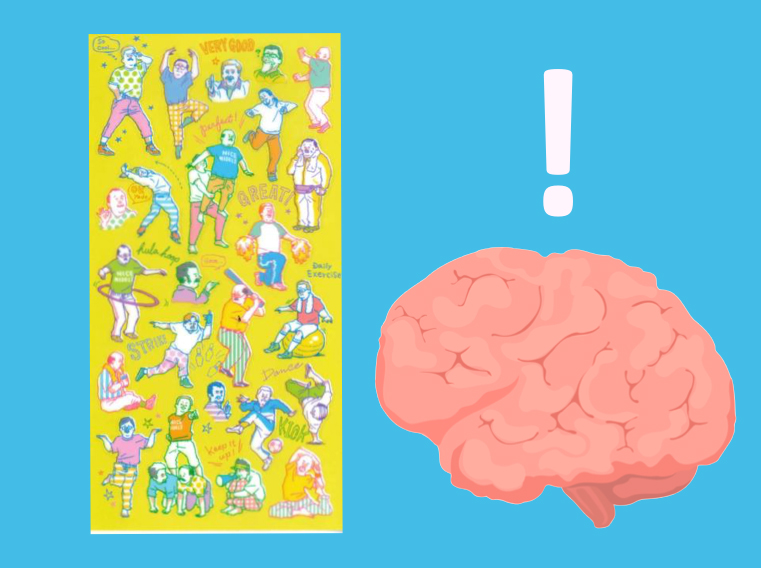
This strategy may seem juvenile. If it reminds you of being back in primary school and receiving gold stars, hear me out.
Too often we don’t stop to acknowledge and appreciate ourselves for accomplishing tasks. We finish one thing and we immediately shift our focus to the next task on our to-do list.
When you work this way, your work routine can quickly become soul destroying and your motivation can take a dive.
This is why every so often I pull out my fun stamps and colourful sheets of stickers. After completing a task, I pause and acknowledge what I’ve done by giving myself a stamp or a fun sticker. It’s a little celebration.
For some reason, my brain responds particularly well to quirky Japanese stickers featuring ogisan (Japanese grandfathers) exercising. We’re all different, so explore what stamps and stickers work for you.
Colours are lot of fun! Incorporating a little more colour into your studies and work life can take things to the next level and perk up your brain when it needs a little motivational boost.
But the colours that I like may not be the colours that you like. Your colour preferences may also vary from day to day. Notice the colours that make you feel good and have fun seeing how you can incorporate them into your study sessions.
For many people, colouring in is a great way to reduce stress and calm the frenzied mind.
But as much as I love coloured pens, pencils and crayons, I’m not keen on colouring in. Instead of decreasing my stress levels, it has the opposite effect. It makes me feel uptight and on edge.
Why?
Because I associate colouring in with the serious business of winning at all costs.
I observed my older brother enter these competitions and effortlessly win free stuff: remote control cars, a soda stream, giant tins of chocolate powered drink and LEGO® kits.
I wanted to be like my big brother. So I picked up my pens and started colouring in.
From the age of five to eight, I spent countless hours colouring in. I learnt from a young age if I could focus my mind and stay within the lines, I could win a lot of free stuff, just as my brother did.
One Sunday morning when I was five years old, I coloured in a picture of Fat Cat for a Telethon colouring competition.
I channelled 100% of my brainpower into selecting the right coloured textas and carefully trying to stay inside the lines. I was intensely focused and determined to do my best to impress the judges.
I finished colouring in Fat Cat but I did not feel calm. I felt exhausted.
I received a letter in the mail. It stated I had won first place in the competition.
A full kid’s swing set complete with monkey bars and a slide.
It was like I had won the jackpot. I had pulled the lever on the poker machine and landed on three cherries. My brain was flooded with feel good chemicals.
I became hooked on entering kid’s competitions and the prizes started rolling in . . .
From the outside, it seemed like a bit of harmless fun: textas, colour and free stuff.
But I wish my parents had put their foot down and said “Enough!”. I wish they had boycotted my participation in those colouring in contests.
• Those contests were messing with my mind.
• Those contests were training me to become super competitive.
• Those contests made me connect my self worth with winning and having lots of stuff.
With this mindset, I never felt 100% satisfied. I was always chasing the next prize, the next big win . . .
But how can a 5-year-old child top a swing set complete with a slide and monkey bars?
I was on the hedonic treadmill.
I quickly adapted to my prizes and wanted more and more.
If I had known about a simple concept called the Gap and the Gain, I would have been a much happier kid.
I recently finished reading a fantastic book called The Gap and the Gain: The High Achievers’ Guide to Happiness, Confidence and Success by Dan Sullivan and Dr Benjamin Hardy.
The book focuses on two particular mindsets you can adopt:
1) A gap mindset (the GAP)
2) A gain mindset (the GAIN)
The authors define the GAP as “a toxic mindset that stops people from being happy and appreciating their lives.”.
When you’re in the GAP, you’re basically in the comparison trap. You’re comparing yourself to something or someone else or measuring yourself against some ideal.
Dr Benjamin Hardy states:
“Being in the GAP stops you from living within your own experience. It stops you from appreciating where you are. It stops you from being happy.”
In contrast, when you’re in the GAIN you’re focused on your own personal growth. You compare less and compete less and don’t care about what other people think of you. As Dr Hardy says, “you decide what success means to you, and you choose the life you’ll live.”
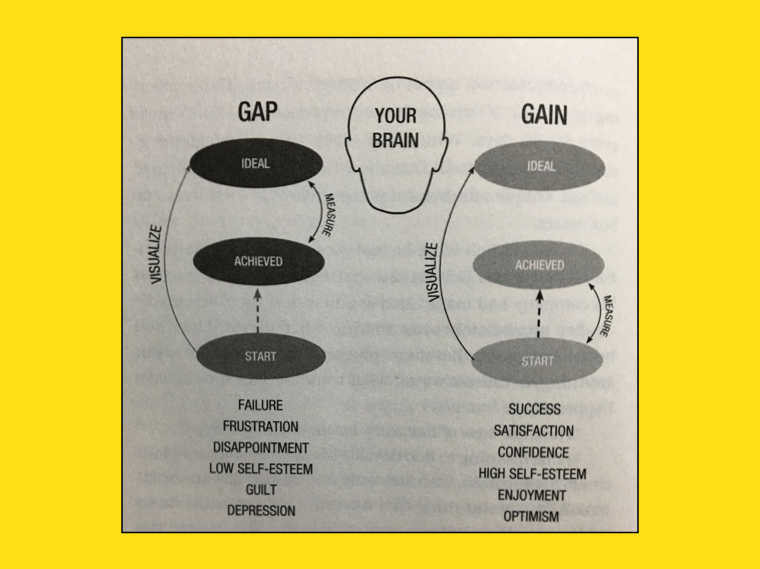
The concept of the Gap and the Gain was developed by Dan Sullivan who has coached entrepreneurs for many years in his Strategic Coach program.
Sullivan had noticed that despite these entrepreneurs having achieved huge financial and material success, a lot of them did not feel successful. In fact, many felt like failures. They were miserable because they were caught in the GAP.
Dr Hardy states:
“Most high performers or “successful” people never took the class on happiness. And there’s a thick narrative out there that in order to be the best performer you can be, “happiness” and “balance” cannot be part of the equation.”
The authors argue this narrative is flawed and they explore ways you can get out of the GAP and in the GAIN (i.e., shift from gap thinking to gain thinking).
The authors argue if you can make this shift you will feel lighter, more energised and more confident rather than feeling anxious, stressed and unhappy (signs of being stuck in the GAP mindset).
All of us fall into the GAP, multiple times a day.
How can you not?
We live in a super competitive culture. The education system, especially ATAR, is a perfect example of this. You’re being ranked against other students.
Student tell me, “I feel like I’m competing against my friends . . . I don’t like it”.
Of course you don’t like it! Trust that disturbing feeling you have. It’s telling you something is not quite right.
Competing against your friends really sucks. It’s can be downright damaging to your relationships, not to mention the toxic stress it adds to your life.
Rather than competing against one another, let’s support each other to do our best.
When we support each other and look out for each other, everyone wins. Everyone gets a bit closer to where they want to go.
Now, if you’re reading this and find yourself currently in the GAP, that’s okay. It’s totally normal.
But I’m going to share with you some simple ways to get out of the GAP and into the GAIN. Because when you’re in the GAIN, you feel happier and more motivated to pursue what really matters to you.
There are several ways you can get out of the GAP and into the GAIN. Here are three strategies I have been practising from the book The Gap and the Gain:
This involves looking at where you are now and comparing it to where you were before.
Why bother doing this?
Because we can easily forget what our lives used to be like. We adapt to our new normal. Dr Hardy states:
“You can forget what you previously struggled with and overcame. You can take for granted how far you’ve come, ignore your progress, and miss out on the confidence of remembering where you were.”
He adds:
“This is why it’s incredibly powerful and important to keep journals, records, or “annual reviews.” . . . you can look back and be reminded of the easily forgotten past.”
One simple practice the authors recommend is taking note of three gains at the end of the day. These gains can be external accomplishments (e.g. prizes and good grades) but also new experiences, personal growth, life lessons, new skills and relationships built.
I’ve been writing down my gains before I go to bed each night. This practice is incredibly simple but powerful!
Dr Hardy states social media is designed to put you in the GAP. It can distract you from your goals and strip you of the freedom to navigate life on your own terms.
If you can get off social media or reduce the time spent on it, this will help you get a clearer sense of who you are, who you want to be and where you want to go.
In the book Stand Out of Our Light: Freedom and Resistance in the Attention Economy, philosopher Dr James Williams says:
“There’s a big misalignment between the goals we have for ourselves and the goals social media companies have.”
As an ex-Google product strategist, Williams used to sit in product design meetings. So he knows the goals of big tech companies. He says they include things like:
• Number of clicks
• Time on site/app
• Number of pages viewed
• Number of advertisements viewed
• Number of conversions
I would be really surprised if you told me your goal was to spend a huge chunk of time scrolling through social media each day. But this is what a lot of people do.
This is why over a year ago, I made the decision to delete all my social media accounts.
Clicking delete was one of the the best things I ever did. I have a lot more clarity about who I am, what I stand for and what’s important to me. It also helped me to get out of gap style thinking.
In the book, Dr Hardy discusses Professor BJ Fogg’s work on Tiny Habits. He shares several Tiny Habit recipes to help us get out of the GAP. Here are a few examples from the book:
After I compare myself with another person, I will say to myself, “Are you in the GAP or the GAIN?”
After I feel discouraged, I will list 3 specific GAINS from the last 30 days.
After someone tells me about a setback, I will say, “What did you GAIN from this experience?”
We are all on different paths in life. We all have a different set of circumstances and access to certain resources. It’s time to focus our minds on doing the best we can.
Start to notice when you fall into the GAP, when you’re distracted by the goals of social media and what other people are doing. Take it from me, getting out of the GAP and thinking in terms of your gains is a much more rewarding and satisfying way to live.
Dr Jane Genovese delivers interactive and engaging study skills sessions for Australian secondary schools. She has worked with thousands of secondary students, parents, teachers and lifelong learners over the past 15 years.
Get FREE study and life strategies by signing up to Dr Jane’s newsletter:
© 2025 Learning Fundamentals